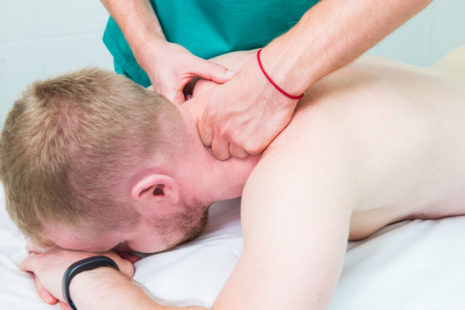The best recovery approach for a rotator cuff injury depends on the severity of the injury and individual factors.
Here are some general strategies for recovering from a rotator cuff injury…
- Rest – Initially, it’s necessary to rest the injured shoulder to allow the damaged tissues to heal. Avoid activities that exacerbate pain or strain the shoulder.
- Ice Therapy – Applying ice to the injured shoulder can help reduce pain and inflammation. Use an ice pack for 15-20 minutes several times a day, especially after activity or exercises.
- Physical Therapy – A structured physical therapy program can help rehabilitate the shoulder, restore range of motion, strengthen the muscles surrounding the rotator cuff, and improve shoulder stability. Therapists may use various techniques such as stretches, strengthening exercises, manual therapy, and modalities like heat or ultrasound.
- Strengthening Exercises – Gradually incorporate rotator cuff and shoulder-stabilizing exercises into your routine to rebuild strength and function. Exercises may include internal and external rotation exercises, shoulder abduction and adduction, scapular stabilization exercises, and exercises targeting the deltoid and other shoulder muscles.
- Stretching – Perform gentle stretching exercises to improve the shoulder joint’s flexibility and range of motion. Focus on stretching the muscles surrounding the shoulder, including the rotator cuff muscles, deltoids, and pectoral muscles.
- Pain Management – Over-the-counter or prescription medications may be used to manage pain and inflammation associated with the injury. Regardless, it’s necessary to follow your healthcare provider’s recommendations and avoid prolonged or excessive use of pain medications.
- Activity Modification – Modify activities or movements that aggravate the shoulder pain or strain the rotator cuff muscles. Avoid overhead activities, heavy lifting, or repetitive movements that may worsen the injury.
- Modalities – In addition to ice therapy, other modalities such as heat therapy, ultrasound, electrical stimulation, or acupuncture may be used to help alleviate pain and promote healing.
- Gradual Return to Activity – Once the shoulder has healed sufficiently and strength and range of motion have improved, gradually reintroduce activities and exercises to avoid re-injury. Start with low-impact exercises and gradually increase intensity and duration as tolerated.
- Surgery (if necessary) – In cases of severe rotator cuff tears or failure to respond to conservative treatment, surgical intervention may be recommended to repair the torn tendon(s). Surgery may involve arthroscopic repair, open repair, or other techniques depending on the extent of the injury.
Working closely with a healthcare professional, such as an orthopedic specialist or physical therapist, is necessary to develop a comprehensive treatment plan tailored to your specific needs and goals. Compliance with treatment recommendations, exercise consistency, and patience are crucial for a successful recovery from a rotator cuff injury.




